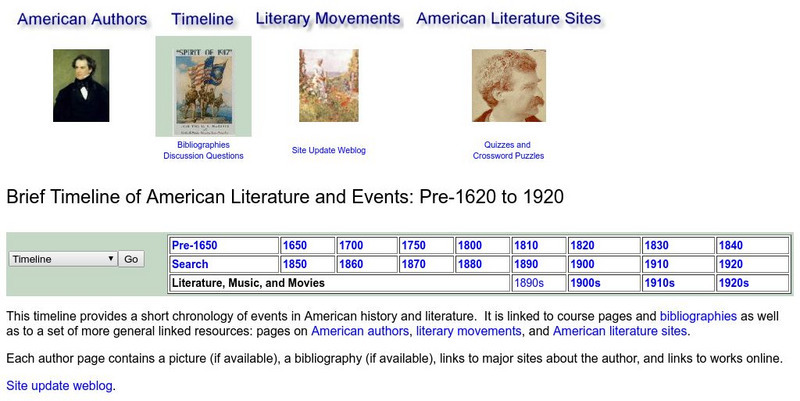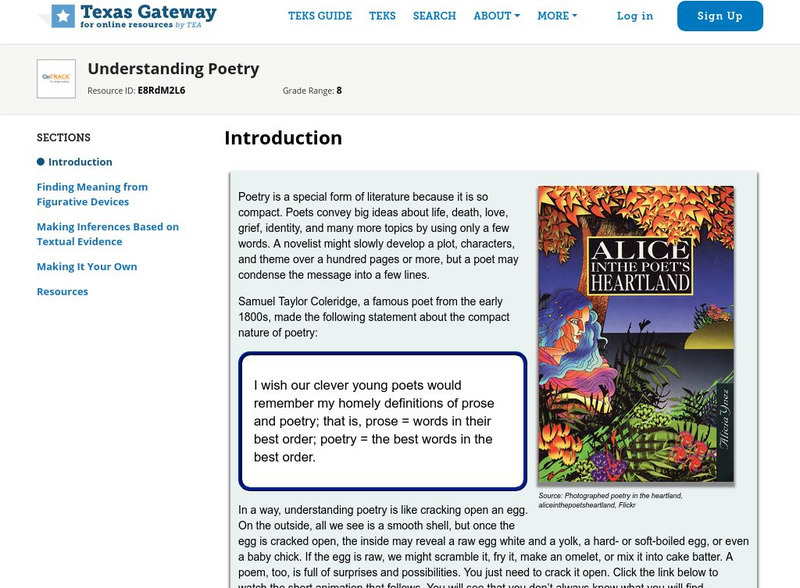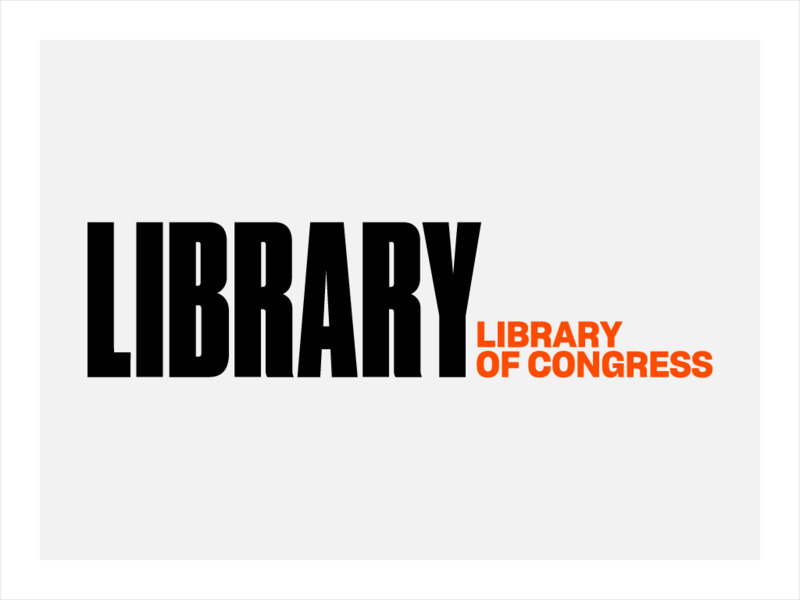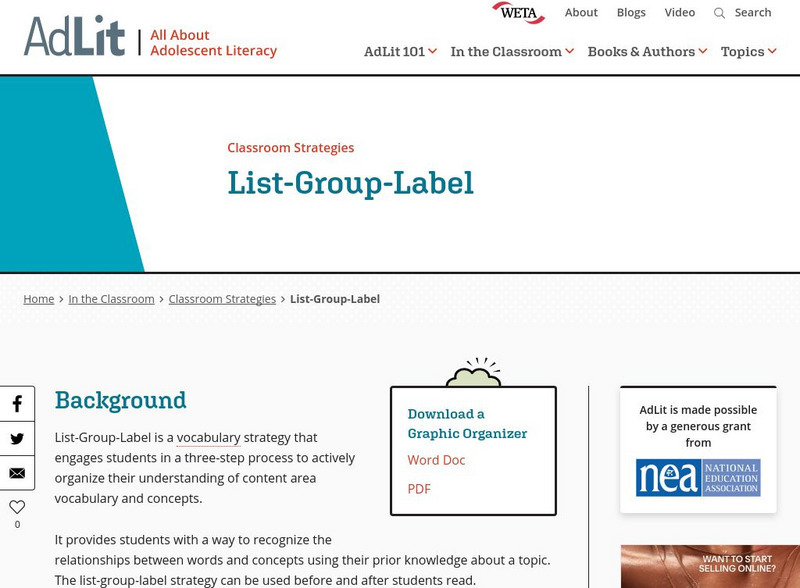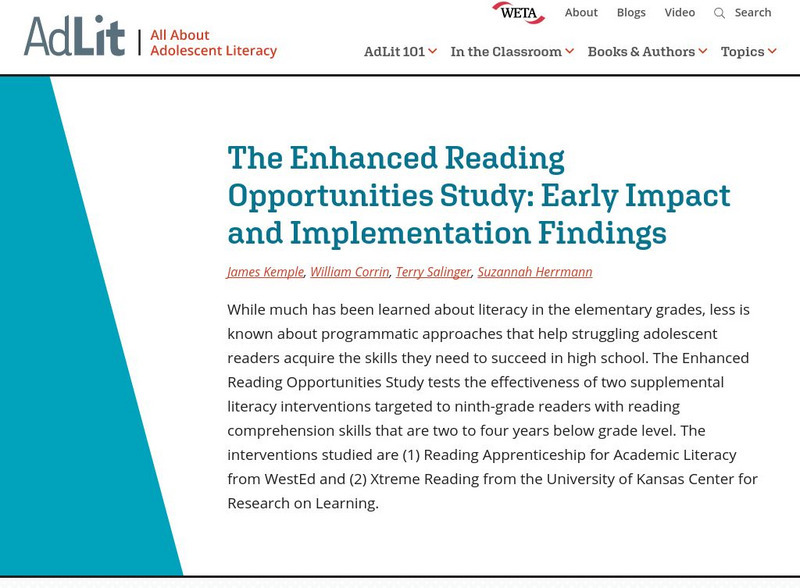Other
Lexile: The Lexile Framework for Reading: Find a Book
Students use the "Find A Book" tool to build a custom book list based on their Lexile measure and interests. Book summaries and cover illustrations are included, as well as links to assist in locating the books on the list.
Sophia Learning
Sophia: Writing, Reading, and Understanding Poetry
This tutorial focuses on different aspects of poetry: definitions, types of poetry with examples, and how to read, write, and analyze poetry. It includes three videos: a YouTube video of "El Guante" performing a free verse poem, a...
Sophia Learning
Sophia: Reading Comprehension and Classroom Discussions
This tutorial focuses on active reading comprehension strategies including reading aloud, taking notes, summarizing, and writing in the margins of books to improve retention and class discussion. It includes two Flickr videos on active...
Academy of American Poets
Poets.org: Curriculum and Lesson Plans
This collection of resources assists educators in teaching students about the art of poetry. Includes links to poetry with grade level, lesson plans, discussion suggestions and classroom exercises. RL.9-10.10a&b text complexity,...
Read Works
Read Works: Poems & Questions for National Poetry Month
[Free Registration/Login Required] This site contains a collection of sets of poems with comprehension questions. The poems were joined as a resource for teachers who are recognizing National Poetry Month during April of each year.
Texas Education Agency
Texas Gateway: Understanding Poetry
[Accessible by TX Educators. Free Registration/Login Required] Students learn to understand and explore different types of poetry.
Texas Education Agency
Texas Gateway: Understanding Poetry (English 7 Reading)
You will learn the importance of graphical elements (e.g., capital letters, line length, word position) in the meaning of a poem.
Washington State University
Washington State University: Literary Movements: Brief Timeline of American Literature
This Washington State University site provides a decade-by-decade timeline of American literature with historical events going on at the same time. Most topics on the timeline are links to additional information about the author, work,...
Texas Education Agency
Texas Gateway: Poetic Forms
[Accessible by TX Educators. Free Registration/Login Required] Learn how to compare and contrast the relationship between the purpose and characteristics of different poetic forms: epic poetry and lyric poetry.
CommonLit
Common Lit: What Happened Here
CommonLit.org is a wonderful resource to use in a Language Arts classroom. Each text is accompanied by guided reading questions, assessment questions, and discussion questions. In addition, students can click on words to see the...
Department of Defense
Do Dea: English 4; Loyalty and Betrayal
A learning module asking students to analyze fiction, examine symbolism and cultural context, read a section of The Kite Runner, practice context clues and Greek and Latin roots, and practice sentence variety with compound and complex...
Association for Supervision and Curriculum Development (ASCD)
Ascd: Building Literacy in Social Studies: Ch 1: Reading Social Studies Texts
Article provides excellent tips and strategies for building comprehension and critical thinking skills in Social Studies. It describes some of the challenges students have with reading and understanding their textbooks.
Better Lesson
Better Lesson: Analyzing Text Complexity of Non Fiction Sources
This activity will help students read and comprehend nonfiction, specifically biographies, through determining criteria for text complexity. Included is a PDF and Smart Notebook titled Determining Text Complexity, and an example of a...
Texas Education Agency
Texas Gateway: Literary Terminology: Practice 5 (English I Reading)
[Accessible by TX Educators. Free Registration/Login Required] To be "in the know" in literature, you need to know the terminology used to describe, interpret, and analyze poetry, drama, and fiction. As you proceed through the sections...
PBS
Pbs Learning Media: Elements of Poetry
Discover how literary techniques like figurative language, imagery, and symbolism contribute to the overall meaning of a poem. Explore how a poet establishes and builds on a theme and the difference between tone and mood. Through a close...
Texas Education Agency
Texas Gateway: Understanding Poetry
A learning module that teaches students how to understand poetry in four mini lessons: Introduction, Finding Meaning from Figurative Devices, Making Inferences Based on Textual Evidence, and Making It Your Own.
Library of Congress
Loc: Found Poetry With Primary Sources: The Great Depression
Students explore poetry using American Life Histories: Manuscripts from the Federal Writers' Project, 1936-1940 collection of American Memory, which covers personal stories collected by the Works Progress Administration. In particular,...
California State University
Reading Strategies From the University of Waterloo
Brief and easy to read, this California State University Northridge site lists strategies for getting the most of your reading. Geared for reading texts and technical material.
Library of Congress
Loc: Poetry 180: Entrance
In this poem, the reader is encouraged to take the chance of entering into a room of the unknown.
Library of Congress
Loc: Poetry 180: How to Listen
In this non-prose piece, the poet shares how to listen carefully to others.
AdLit
Ad lit.org: Classroom Strategies: First Lines
First Lines is a strategy in which students read the beginning sentences from assigned readings and make predictions about the content of what they're about to read. This pre-reading technique helps students focus their attention on what...
AdLit
Ad lit.org: Classroom Strategies: List Group Label
It provides students with a way to recognize the relationships between words and concepts using their prior knowledge about a topic. The list-group-label strategy can be used before and after students read.
AdLit
Ad lit.org: The Enhanced Reading Opportunities Study
While much has been learned about literacy in the elementary grades, less is known about programmatic approaches that help struggling adolescent readers acquire the skills they need to succeed in high school. The Enhanced Reading...
AdLit
Ad lit.org: Teach the Seven Strategies of Highly Effective Readers
To improve students' reading comprehension, teachers should introduce the seven cognitive strategies of effective readers: activating, inferring, monitoring-clarifying, questioning, searching-selecting, summarizing, and...









